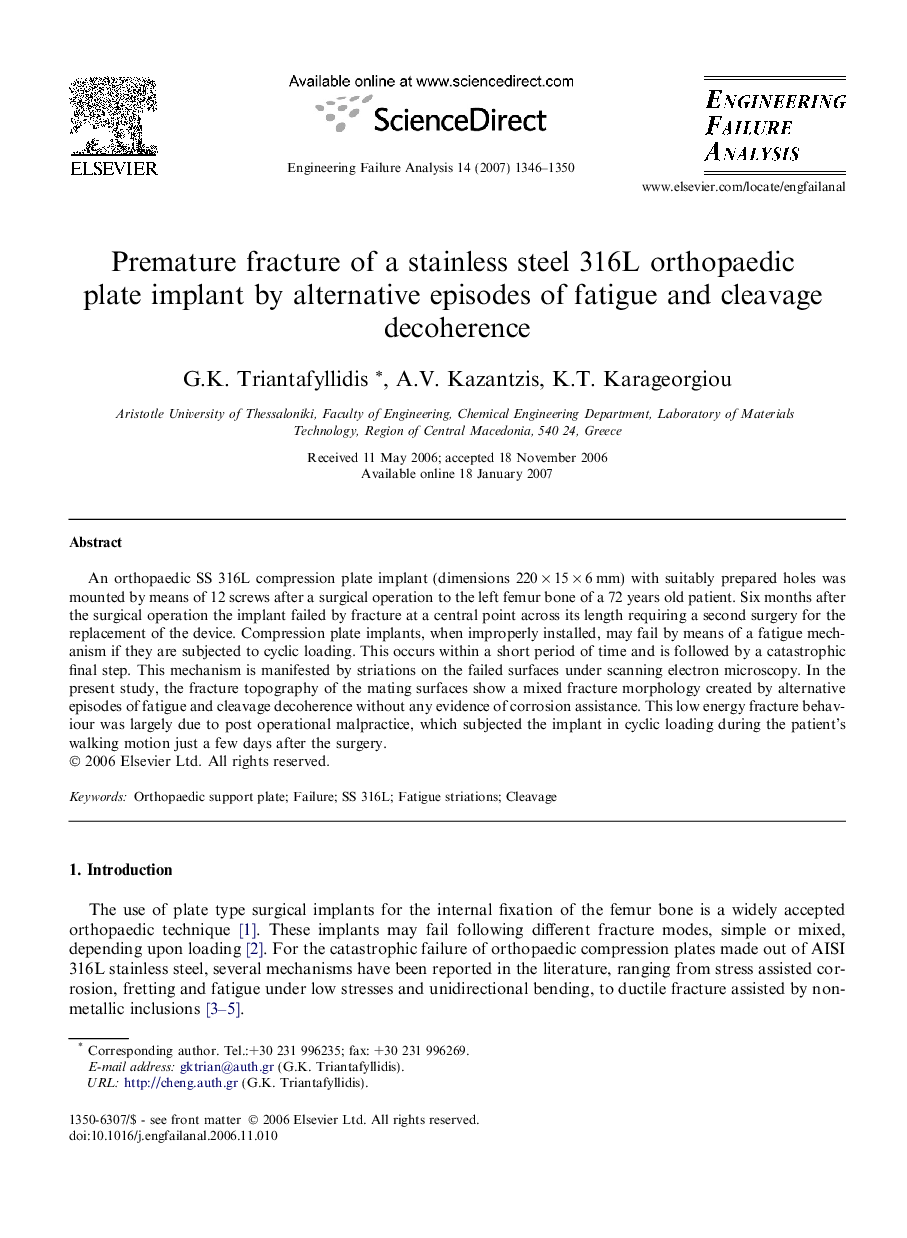| Article ID | Journal | Published Year | Pages | File Type |
|---|---|---|---|---|
| 770130 | Engineering Failure Analysis | 2007 | 5 Pages |
An orthopaedic SS 316L compression plate implant (dimensions 220 × 15 × 6 mm) with suitably prepared holes was mounted by means of 12 screws after a surgical operation to the left femur bone of a 72 years old patient. Six months after the surgical operation the implant failed by fracture at a central point across its length requiring a second surgery for the replacement of the device. Compression plate implants, when improperly installed, may fail by means of a fatigue mechanism if they are subjected to cyclic loading. This occurs within a short period of time and is followed by a catastrophic final step. This mechanism is manifested by striations on the failed surfaces under scanning electron microscopy. In the present study, the fracture topography of the mating surfaces show a mixed fracture morphology created by alternative episodes of fatigue and cleavage decoherence without any evidence of corrosion assistance. This low energy fracture behaviour was largely due to post operational malpractice, which subjected the implant in cyclic loading during the patient’s walking motion just a few days after the surgery.
